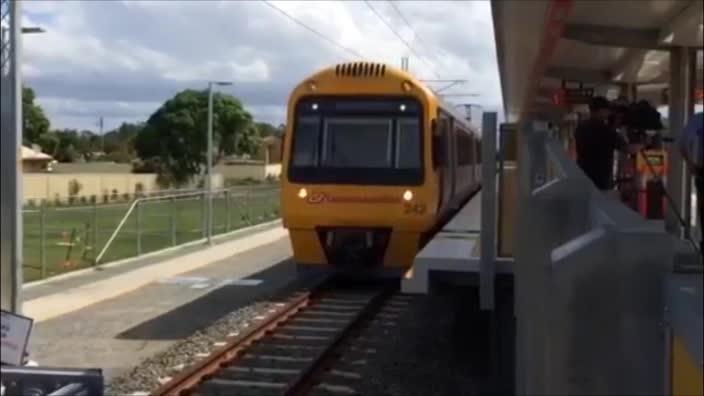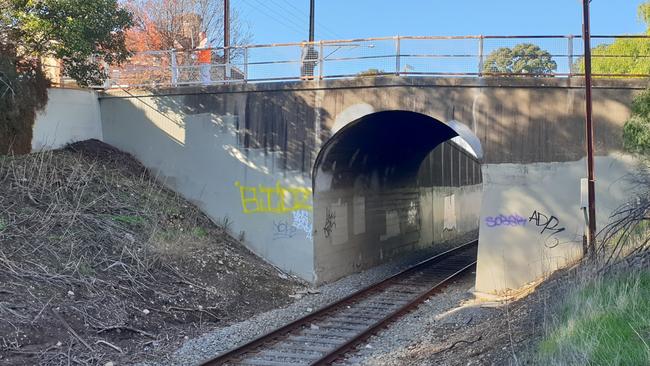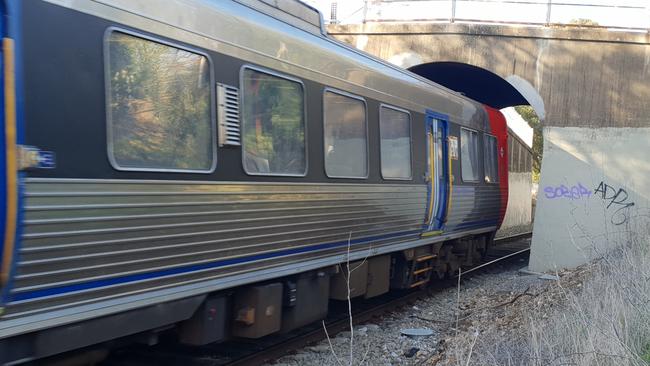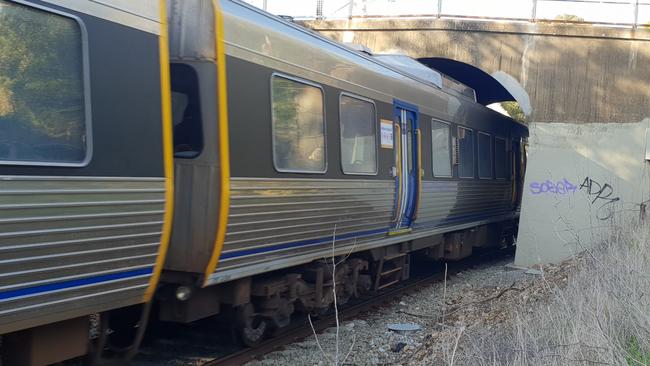Historic bridge facing demolition for electrification of Adelaide to Gawler railway line
A 100-year-old bridge in the heart of Gawler is facing demolition because it is too low for electric trains. Locals are upset the bridge could go, arguing it is historic.

A 100-year-old bridge is facing demolition because it is too low for the $615 million electrification of the Adelaide-Gawler railway line.
The King St bridge sits right at the end of the line, about 100m south of the Gawler railway station.
Built in the 1920s, the stone arched bridge will be unable to accommodate electric-powered locomotives and carriages.
The trains have metallic arms called pantographs connecting them to overhead power lines.
The Department of Transport, Planning and Infrastructure (DPTI) has told Gawler Council it wants to demolish the bridge and replace it with a footbridge for cyclists and pedestrians.

It has conducted extensive analysis of the impact of the bridge’s demolition on local traffic flows, including response times from the nearby Gawler Police Station.
According to a study for DPTI by engineering company Tonkin Consulting, the bridge’s removal “will have little impact on delay times and queue lengths in the wider road network”.
Tonkin said one option was replacing the bridge with a smaller footbridge for pedestrians and cyclists “that would accommodate future electrification infrastructure”.
“The electrification of the Gawler rail line will deliver faster, safer and more reliable rail services to Gawler,” says its report.
“The loss of the bridge and subsequent diversion of traffic should be viewed within the wider strategic context of significant public transport improvements benefiting many residents of the Town of Gawler.”

Nearby residents and businesses, however, want the railway track to be lowered to allow electric trains to pass under the bridge.
King St funeral director Mark Forgie said while the cost may be prohibitive, the bridge was part of Gawler’s rich history.
“This used to be the main exit of Gawler to the north, it was curved so drays could make it around the corner,” he said.
“The bridge was built about 100 years ago and it’s not high enough for the electric structure on top of trains.

“People are running around saving walls all around the town. This is probably a bigger heritage feature than any of those put together.”
Mr Forgie said the demolition of the bridge was first discussed several years ago but had resurfaced with confirmation the railway line would be electrified from Salisbury to Gawler.
“They (council and government) all want this electric line so the bridge is putting them between a rock and a hard place,” he said.

Gawler mayor Karen Redman said council had sought an update from DPTI on the status of the bridge.
“It is an important access point over the rail line, however electrification is also important to the town,” she said.
“We are currently waiting for further information.”
Meanwhile, the State Government has announced it will buy 12 new electric trains with three carriages on the line when it is electrified.
Transport Minister Stephan Knoll said the line was Adelaide’s most patronised, carrying around 21,000 of the approximately 60,000 train commuters who travelled on average each weekday.
“Once operational, there will be 15 electric trains servicing the Gawler line as there is a surplus of three electric trains servicing the Seaford and Tonsley lines,” he said.

“We also have the ability to increase capacity even further by turning these three car trains into four car trains in the future if required.”
Mr Knoll said there was “a host of housing, commercial and business developments underway or touted to begin in and around our northern suburbs”.
“That’s why building this additional capacity into the newly electrified Gawler line is so important, so we can provide a fast, efficient and customer focused public transport service to accommodate this development,” he said.
